This article explains how to enable or disable the Clipboard history across your devices in Windows 11.
Clipboard history is a feature in Windows that allows users to access a list of previously copied items. When you copy something to the clipboard, it is stored in a temporary memory location.
With clipboard history, you can access a list of all the items you’ve copied to the clipboard and easily paste them again, even if you’ve copied something else since then.
Enabling or disabling clipboard history across your devices in Windows 11 can help you manage your copied items. It can save you time and effort in the long run. However, some users may prefer to disable clipboard history for privacy reasons, as it can potentially save sensitive information.
Turn on or off Clipboard history across your devices
As mentioned, you can turn on or off clipboard history across your devices in Windows 11.
Here’s how to do it.
First, open the Windows Settings app.
Then, select System on the left and Clipboard tile on the right to expand it.
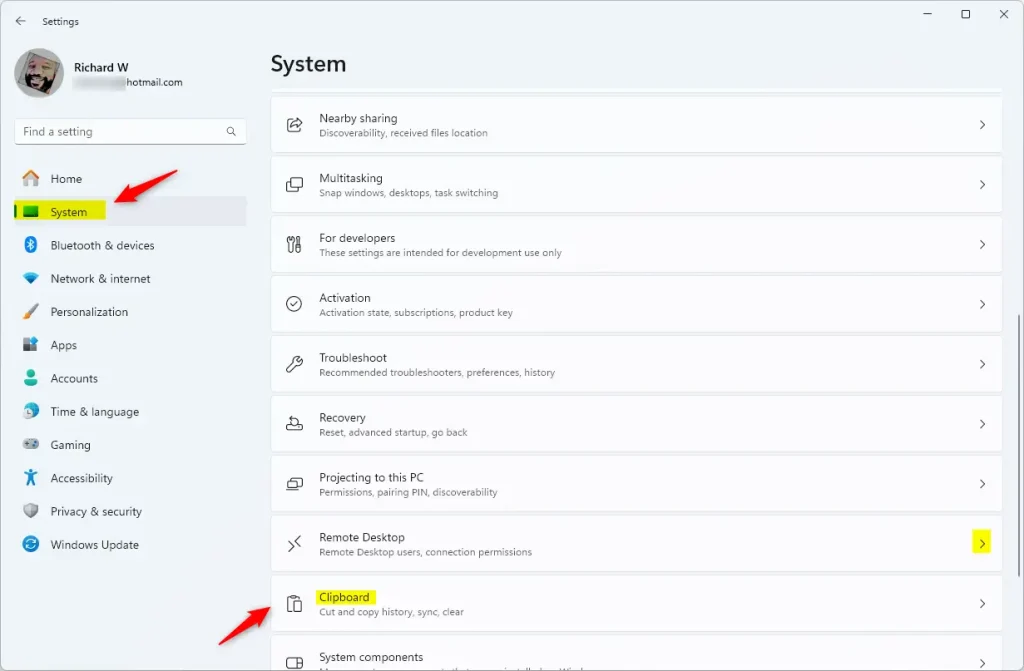
Ensure that the Cliboard history is turned on on the Clipboard settings page. You can not use Clipboard history across your devices if Clipboard history is turned off.
Next, select the “Clipboard history across your devices” tile. Then, toggle the switch button to the On position to enable it.
To disable it, toggle the button to the Off position.
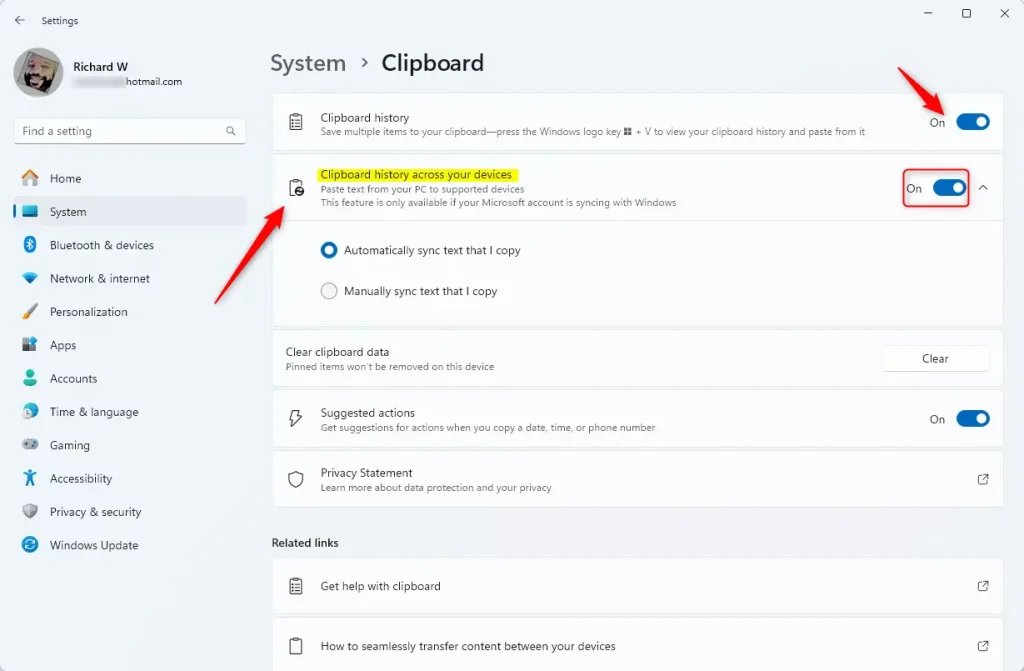
Once enabled, select one of the options below:
- Automatically sync text that I copy
- Manually sync text that I copy
Exit the Settings app when you’re done.
Enable or disable clipboard sharing across devices using group policy
Another way to disable or enable clipboard sharing across devices is to use the Local Group Policy Editor.
First, open the Local Group Policy Editor (gpedit.msc). (Search for “Edit group policy”) on the Start menu.
Then, navigate the folders below:
Computer Configuration > Administrative Templates > System > OS Policies
In the Group Policy details pane on the right, locate and double-click the “Allow Clipboard synchronization across devices” settings.
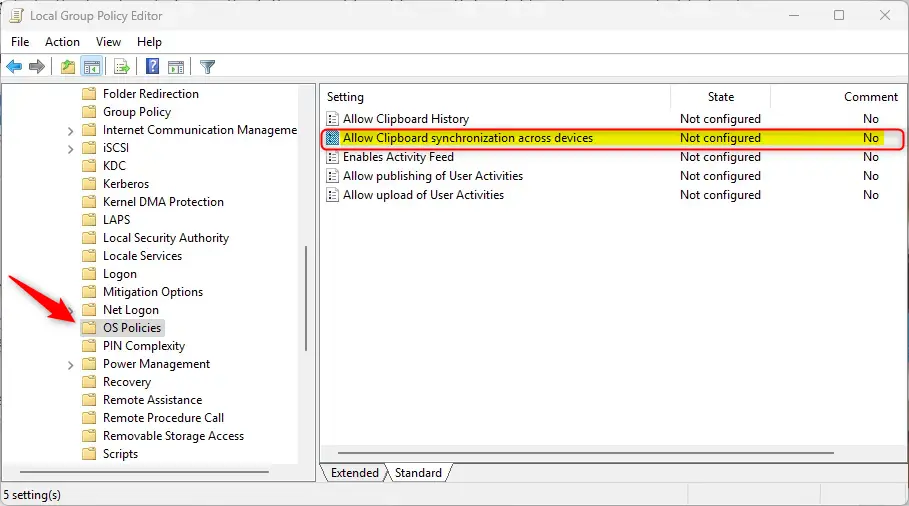
On the “Allow Clipboard synchronization across devices” window, set the option to Not Configure, Enabled, or Disabled.
- Not Configured (default)
- Enabled – Clipboard contents can be synchronized across devices logged in under the same Microsoft account.
- Disabled – Clipboard contents cannot be shared with other devices.
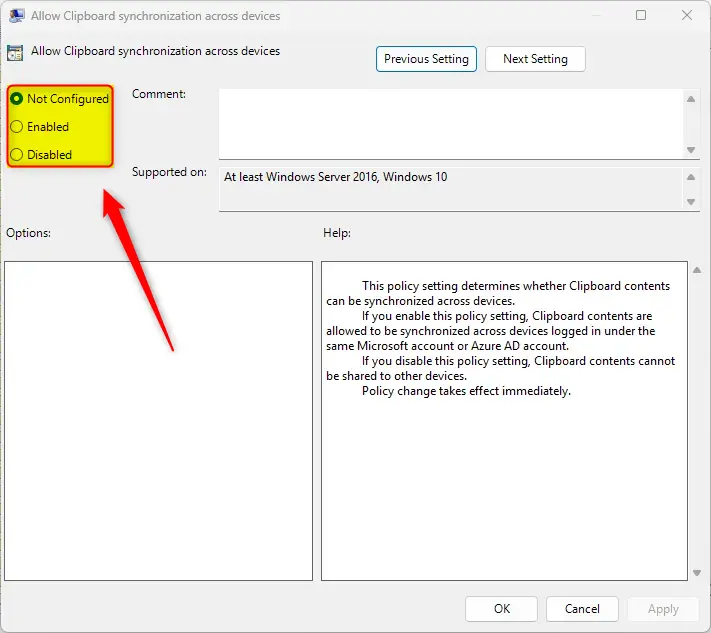
Click OK to save your changes. You may have to reboot your device for the settings to apply.
Turn on or off clipboard history synchronization using the Windows Registry Editor
Yet another way to disable the clipboard history synchronization is to use the Windows Registry editor.
First, open the Windows Registry and navigate to the folder key path below.
Disable or enable for current user:
Computer\HKEY_LOCAL_MACHINE\SOFTWARE\Policies\Microsoft\Windows\System
Next, double-click the AllowCrossDeviceClipboard (REG_DWORD) name on the System key’s right pane to open it.
Then, enter a value 0 to disable the Clipboard history synchronization.
If you do not see the “AllowCrossDeviceClipboard” item, right-click a blank area and create a new DWORD (32-bit) registry item.
Then, enter the name “AllowCrossDeviceClipboard” and enter a value 0
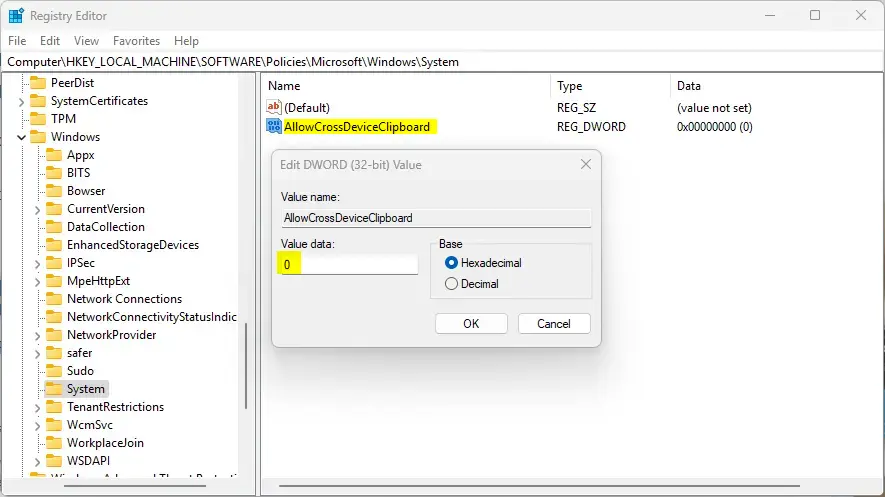
To restore the default behavior and allow the clipboard history synchronization, delete the “AllowCrossDeviceClipboard” name created above.
The sync feature in clipboard history is tied to your Microsoft or work accounts, so use the same login information on all your devices.
Save your changes and restart your computer.
That should do it!
Conclusion:
- Enabling or disabling clipboard history synchronization across devices in Windows 11 offers users the flexibility to manage their copied items effectively.
- Users can turn on or off clipboard history through the Windows Settings app, Local Group Policy Editor, or Windows Registry Editor, allowing customization based on individual preferences and privacy concerns.
- Whether automatically syncing text or manually syncing it, users can save time and effort by accessing a list of all copied items and pasting them when needed.
- Remember that the synchronization of clipboard history is tied to Microsoft or work accounts, so it is important to use the same login information on all devices for the sync feature to work seamlessly.
- This comprehensive guide provides clear steps for users to take control of their clipboard history synchronization on Windows 11, enhancing both convenience and privacy.
Feel free to share any feedback or additional insights in the comments below.

Leave a Reply Cancel reply